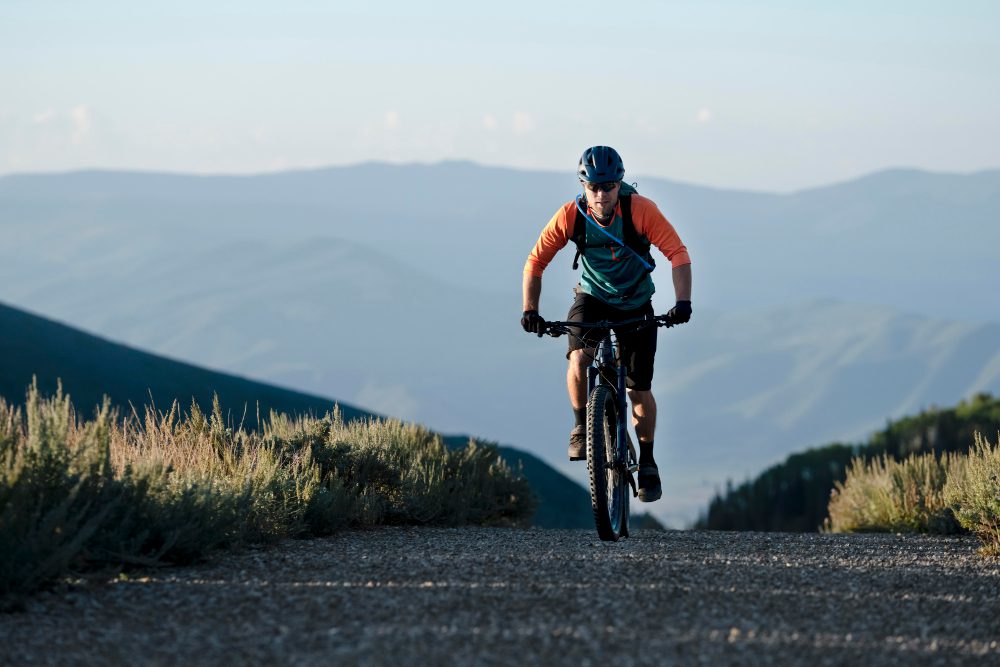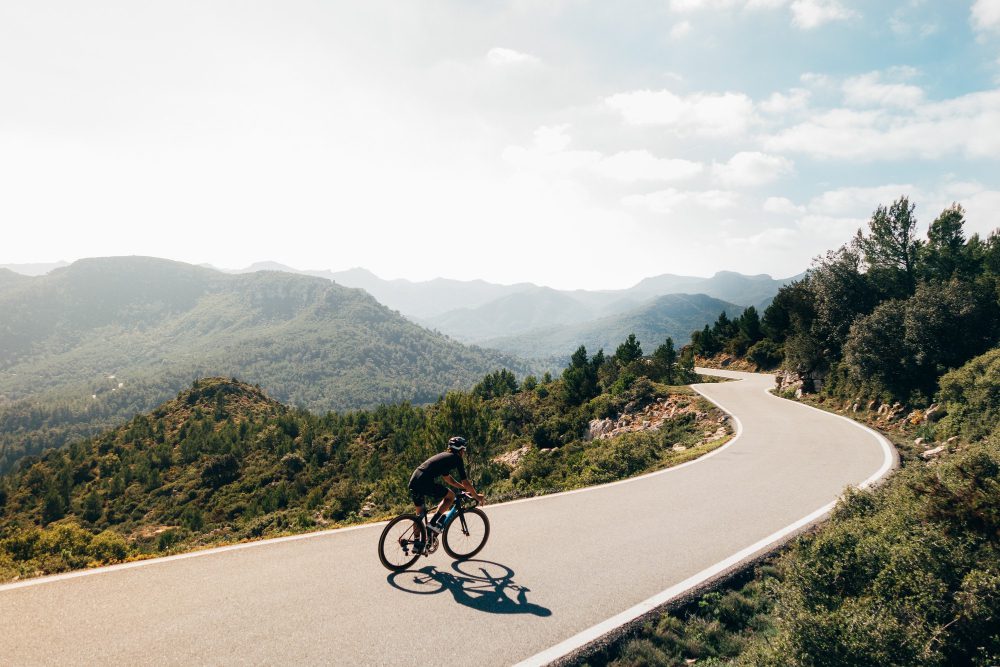Is 100k a long bike ride?
Riding a bike can be a great way to stay active, explore new places, and challenge yourself physically. Whether you are a seasoned cyclist or just starting out, you may be wondering, “Is 100k a long bike ride?”.
The answer to this question depends on various factors, including your fitness level, cycling experience, and the terrain you will be riding on. For some cyclists, 100k (approximately 62 miles) may be considered a long distance, while for others it may be a moderate or even a short ride.
Factors that Determine the Length of a Bike Ride
When determining whether 100k is a long bike ride, there are a few key factors to consider:
- Fitness Level: Your current fitness level plays a crucial role in how long you can comfortably ride. If you have been regularly cycling and have built up endurance, 100k might be a manageable distance for you. On the other hand, if you are just starting out or have not been actively cycling, it may be more challenging.
- Terrain: The terrain you will be riding on can greatly impact the difficulty of the ride. Riding 100k on flat, smooth roads is generally easier compared to hilly or off-road routes. If you’re planning a ride with significant elevation gain or technical sections, it may make the distance feel longer.
- Pace: Your cycling pace also affects your perception of distance. Riding at a faster pace can make a 100k ride feel shorter, while a slower pace may make it feel longer. Consider your average speed and how it aligns with the distance you plan to cover.
Perception of Distance
The perception of distance varies from person to person, and what one cyclist considers long, another may view as relatively short. Some experienced cyclists regularly complete century rides (100 miles or 160k) as part of their training or group events.
“It’s all relative. For some people, 100k might be a monumental accomplishment, while for others, it’s just another ride in the park.”
Ultimately, the length of a bike ride is a personal assessment based on individual goals and capabilities. What matters most is setting realistic goals and challenging yourself within your own limits.
Preparing for a Long Bike Ride
If you are planning to embark on a 100k bike ride, it is essential to prepare properly. Here are some tips to help you get ready:
- Training: Gradually increase your mileage leading up to the ride. Incorporate longer rides into your training plan, allowing your body to adapt to longer distances.
- Nutrition and Hydration: Stay properly fueled and hydrated during your ride. Pack snacks, energy gels, and plenty of water to keep your energy levels up.
- Bike Maintenance: Ensure your bike is in good working order before tackling a longer ride. Check your tires, brakes, gears, and overall bike condition.
- Safety: Wear a helmet and high-visibility clothing, obey traffic laws, and be aware of your surroundings. Consider riding with a group or letting someone know your planned route.
In Conclusion
While 100k may be considered a long bike ride by some, it is ultimately subjective and influenced by various factors. The length of a bike ride depends on individual fitness levels, the terrain, and personal goals. Remember to listen to your body, set realistic goals, and enjoy the journey!
Can I cycle 100 miles without training?
Many cycling enthusiasts may have wondered if it is possible to cycle 100 miles without any prior training. While it may sound like a daunting task, it is important to consider the physical demands of such a long-distance ride and the potential risks involved.
The Physical Demands
Cycling 100 miles requires a significant amount of physical endurance and stamina. Without proper training, your body may not be prepared for the long hours of cycling, which can result in muscle fatigue, cramps, and even injuries.
Training is crucial to build up your cardiovascular fitness, strengthen your muscles, and improve your overall endurance. This will help you tackle the challenges of a long-distance ride and reduce the risk of exhaustion or injury.
The Risks
Attempting a 100-mile ride without training increases the risk of overexertion and puts strain on your body. The lack of muscular strength and cardiovascular fitness may lead to injuries and other health issues.
“Cycling long distances without training can be potentially dangerous for your body. It is essential to properly prepare yourself for such a demanding ride.”
The Importance of Training
Training helps your body adapt to the physical demands of cycling, allowing you to gradually increase your mileage and build endurance. With a structured training plan, you can improve your fitness level, enhance your cycling technique, and reduce the likelihood of injuries.
Preparing for a 100-Mile Ride
If you are considering a 100-mile ride, here are some steps to help you prepare:
- Start with shorter rides and gradually increase your mileage.
- Include interval training and hill climbs to improve your strength.
- Focus on proper nutrition and hydration to sustain your energy levels.
- Invest in a comfortable and well-fitted bike to prevent discomfort during the long ride.
How long will it take to ride 1000 miles on a bike?
When it comes to long bike rides, a distance of 1000 miles definitely qualifies as a significant challenge. However, the exact time it will take to complete this distance can vary depending on various factors.
1. Speed and Riding Conditions
The speed at which you ride and the conditions you encounter along the way will greatly affect how long it takes to cover 1000 miles. If you are riding on flat, smooth roads with favorable weather conditions, you can expect to ride at a faster pace. On the other hand, hilly terrain, strong headwinds, or adverse weather conditions will slow you down.
2. Fitness and Experience
Your fitness level and cycling experience also play a crucial role in determining how long it will take to ride 1000 miles. Seasoned cyclists with excellent fitness may be able to complete the distance more quickly compared to those who are less experienced or less fit. Take into account your own capabilities when estimating the timeframe.
3. Bike and Gear
The type of bike and gear you have will influence your speed and comfort during the ride. A lightweight road bike designed for long distances can help you maintain a faster pace. Additionally, investing in quality gear, such as padded shorts and gloves, can alleviate discomfort and minimize fatigue, allowing you to ride for longer periods.
“Remember, the goal is not just to complete the distance but also to enjoy the journey.”
4. Average Daily Mileage
To estimate the time it will take to ride 1000 miles, consider your proposed average daily mileage. If you plan to ride every day without rest days, divide 1000 miles by your average daily mileage to get an approximate number of days required. However, it is important to listen to your body and take rest days if necessary to avoid burnout or injury.
5. Additional Factors
Other factors that can affect the duration of your 1000-mile bike ride include altitude changes, road conditions, traffic, and breaks taken during the journey. Uphill climbs and rough terrain will slow you down, while frequent breaks or detours will add extra time to your overall trip.
How far can you realistically cycle in a day?
Cycling can be a great way to stay active and enjoy the outdoors. Whether you’re a seasoned cyclist or just starting out, it’s important to know how far you can realistically cycle in a day to plan your rides effectively.
Factors affecting your cycling distance
Several factors can affect how far you can comfortably cycle in a day:
- Physical fitness: Your fitness level plays a significant role in determining your cycling endurance. Regular training and conditioning can help increase your stamina and enable you to cover greater distances.
- Terrain: The type of terrain you’re cycling on – flat, hilly, or mountainous – will also impact your cycling distance. Riding on flat roads allows for faster speeds and longer distances, while uphill climbs require more effort and may limit your daily mileage.
- Weather conditions: Adverse weather conditions such as strong winds, heavy rain, or extreme heat can make cycling more challenging and slow you down, affecting your overall distance.
- Bike and equipment: The type and condition of your bike, as well as the gear you have, can influence your cycling performance. A well-maintained, lightweight bike with appropriate gear ratios can make riding easier and enable you to cover more ground.
Average cycling distances
While individual abilities vary, an average cyclist can typically cover around 60-80 miles (96-128 km) in a day. This distance allows for breaks, rest stops, and time to enjoy the surroundings without pushing too hard.
Of course, experienced cyclists or those on a multi-day cycling tour can cover much greater distances. Some cyclists have completed impressive feats, like completing 100-mile (160 km) rides or even longer distances.
However, it’s essential to remember that cycling long distances requires proper training, nutrition, and hydration. Pushing yourself too hard without proper preparation can lead to fatigue, injuries, or burnout.
Tips for increasing your cycling distance
If you’re looking to gradually increase your cycling distance, here are a few tips:
- Set realistic goals: Start by gradually increasing your mileage each week rather than attempting a huge leap in distance all at once.
- Follow a training plan: Incorporate a structured training plan that includes both shorter rides for speed and longer rides for endurance.
- Listen to your body: Pay attention to how your body feels during and after each ride. Rest and recover when needed to avoid overexertion or injury.
- Stay hydrated and fuel properly: Drink enough water and consume nutritious snacks or energy gels during long rides to maintain energy levels.
Cycling can be a fulfilling and enjoyable activity, and understanding your limits while gradually pushing yourself can lead to significant improvements in your cycling distance.
Conclusion
Cycling 100 miles without training is not advisable. It is important to prioritize your safety and well-being by gradually building up your fitness level and endurance through proper training.
A long-distance ride can be an incredible accomplishment, but it requires dedication and preparation. So, lace up your cycling shoes, hit the road, and enjoy the journey!
While it is difficult to determine an exact timeframe for riding 1000 miles on a bike, taking into account the mentioned factors will help you estimate a realistic duration. Remember, enjoying the ride and prioritizing your safety and well-being should always be the main focus. Whether it takes days or weeks, the sense of accomplishment upon completing such a challenging distance is truly unparalleled.



